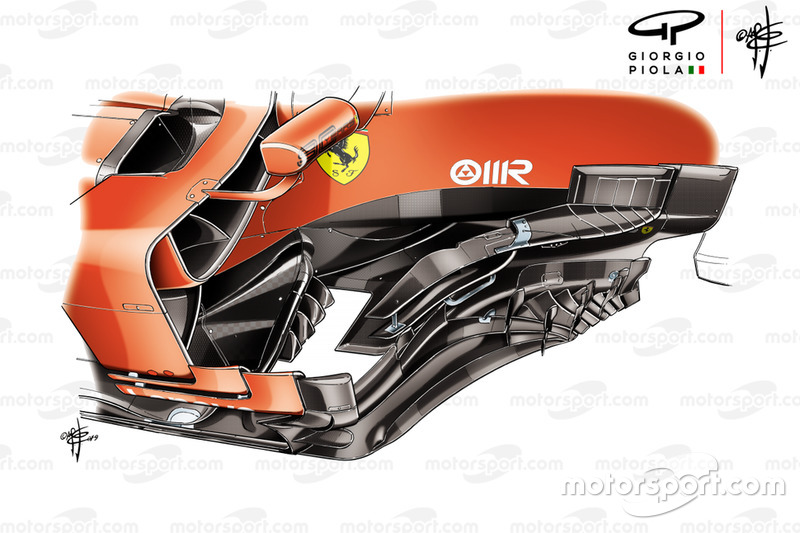
We are already past the halfway point in the Formula 1 season, and so far we’ve seen plenty of great work done by the teams to improve their performance. As always, Giorgio Piola has kept a close eye on these improvements – so we can take a look through the story so far…
2019 bargeboard regulation

Photo by: Giorgio Piola
The height at which the bargeboards could extend upward was reduced by 150mm, but they can now sit 100mm further forward.
Mercedes AMG F1 W10 bargeboard

Photo by: Giorgio Piola
Mercedes’ bargeboards and surrounding aerodynamic paraphernalia were given an extensive overhaul in the ‘B’-spec package that arrived at the second pre-season test.
Red Bull RB15 bargeboards

Photo by: Giorgio Piola
Red Bull made changes to its bargeboard and deflector setup early on (red arrows), using a low-slotted element on the leading corner of the floor to bridge the gap and guide the airflow in that region.
Ferrari SF90, bargeboard

Photo by: Giorgio Piola
Ferrari made changes to its bargeboard setup just ahead of the summer break, as it doubled up on the boomerang arrangement, much like Mercedes had with its ‘B’-spec update back at the second pre-season test.
McLaren MCL34 bargeboard

Photo by: Giorgio Piola
McLaren’s initial bargeboard arrangement featured a large wedge-shaped boomerang on the upper boundary of that new lower allowance, and featured numerous slots in order it matched those in the surfaces.
Renault F1 Team R.S.19 bargeboard

Photo by: Giorgio Piola
Renault made a collection of changes to its bargeboards, deflectors and open-face mirrors as part of a larger update package the team introduced at its home race in France.
Williams FW42, bargeboard

Photo by: Giorgio Piola
Keen to unlock the potential of the recalcitrant FW42, Williams made big changes to its bargeboards and side-pod deflectors at the British GP.
 FREE SHIPPING ON US ORDERS · 90 DAY RETURNS
FREE SHIPPING ON US ORDERS · 90 DAY RETURNS 
Leave a comment